Alcalá de Henares, Spain: The College-Town Birthplace of Cervantes
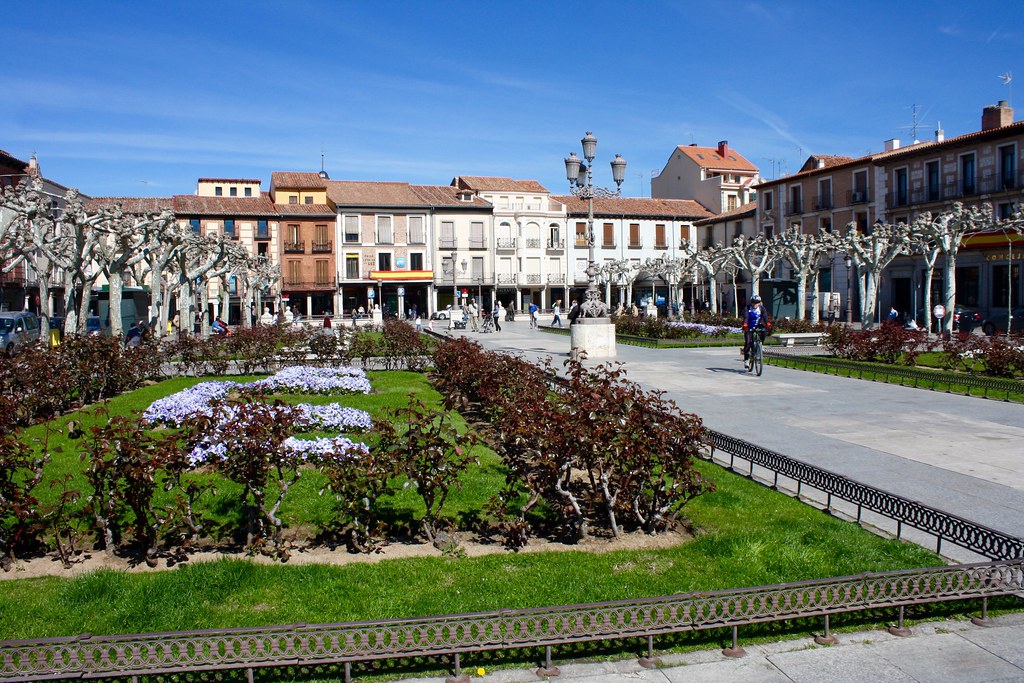 |
| Plaza de Cervantes |
Something that’s always striking to me about Spain is that in one moment you can zip around beneath Madrid on the Metro, refresh your Twitter feed at a McDonald’s in between sips of espresso, and rub elbows with visitors from around the globe at some of the world’s leading art galleries…and in the next moment—a mere 40-minute train ride—you can emerge onto the sun-baked plains of Castilla where it seems as if a village hasn’t changed much since its most famous son, Miguel de Cervantes, was born here way back in 1547. Yes, that Cervantes, the author of Western literature’s first novel, Don Quixote. Some may call Alcalá de Henares a mere suburb of Madrid, but this “small town” of 200,000 is a world away from Spain’s cosmopolitan capital when it comes to architectural and cultural heritage.
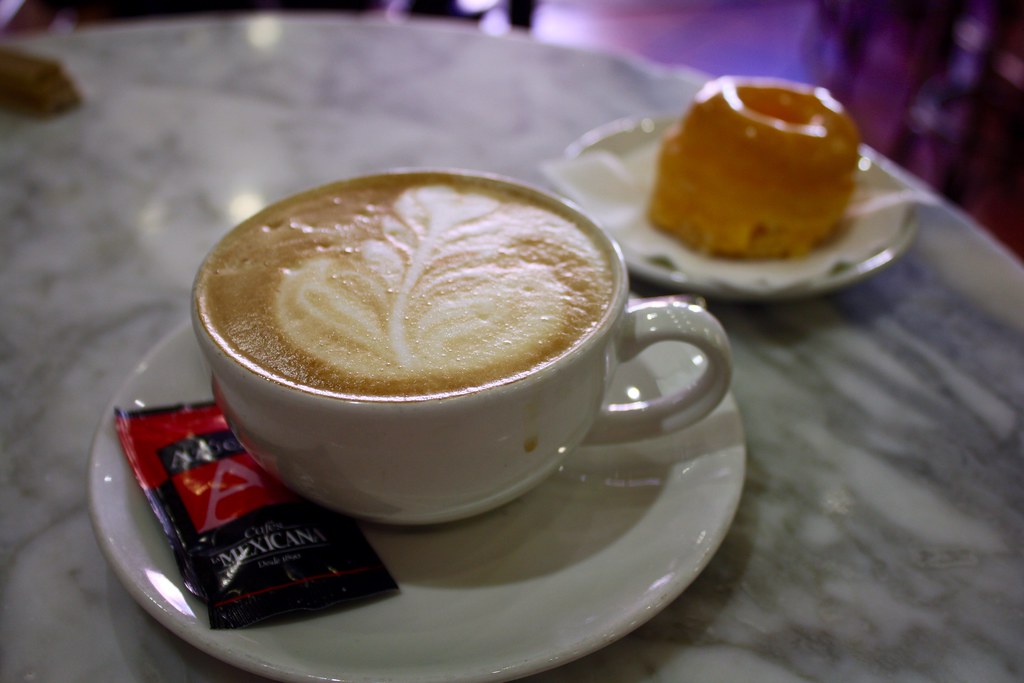 |
| Café con leche & rosquilla de Alcalá |
One warm spring morning last year I was excited to check out what made Alcalá deserve World Heritage status—but first, coffee. At the venerable Café de Libreros in the city’s old town, I briefly dipped in for one of the best-crafted café con leches I’ve had in the country, pairing it with a local specialty, a rosquilla (think of it as a mini cronut).
The former campus of Spain’s premier university
Invigorated with caffeine, I moseyed on down to Alcalá’s central Plaza de Cervantes—more grand promenade than town square—and checked in to the palatial College of San Ildefonso, which once served as the main hall of the Complutense University. You can think of the Complutense as the Spanish counterpart to Oxford: an extremely-prestigious university with medieval roots that has played a major role in educating many of the country’s pre-eminent authors, thinkers, and politicians.
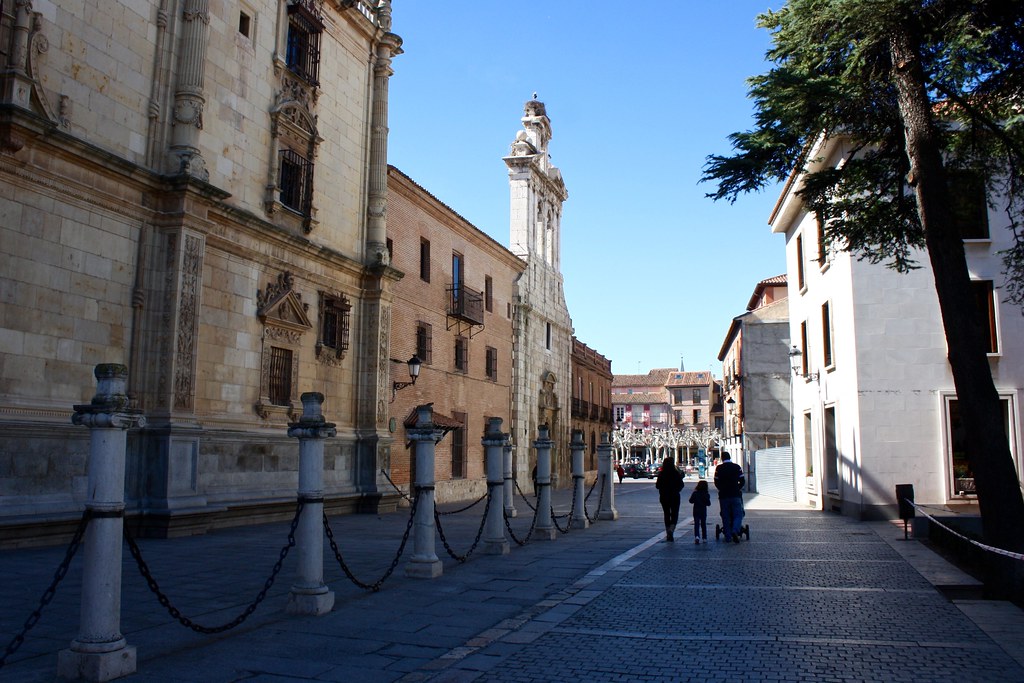 |
| Colegio Mayor de San Ildefonso |
Now, the Complutense began here in Alcalá as a medieval school of higher learning in the year 1293, gaining official university status from the Pope in 1499; the name complutense refers to the original Roman name for the city—Complutum—which was later replaced by the Arabic-influenced name Alcalá de Henares (lit. “Castle on the Henares River”). Anyway, by the 1830s the city of Madrid was in need of an illustrious university befitting a major European capital, so by royal decree in 1836 the university based in Alcalá was transferred to Madrid, where it remains to this day: the Universidad Complutense de Madrid.
This move, however, left half a dozen or so monumental buildings abandoned and in danger of being sold off or demolished, so local alcalaínos formed the Sociedad de Condueños (“Joint-Ownership Association”) to pool their funds and purchase their town’s architectural heritage for the good of the community. Although the centuries-old institution that was the Complutense had left the buildings for good, in 1977 these exquisite late-Gothic and Renaissance gems gained a second lease on life when the University of Alcalá was founded: a brand-new school that would occupy the city’s historic campus.
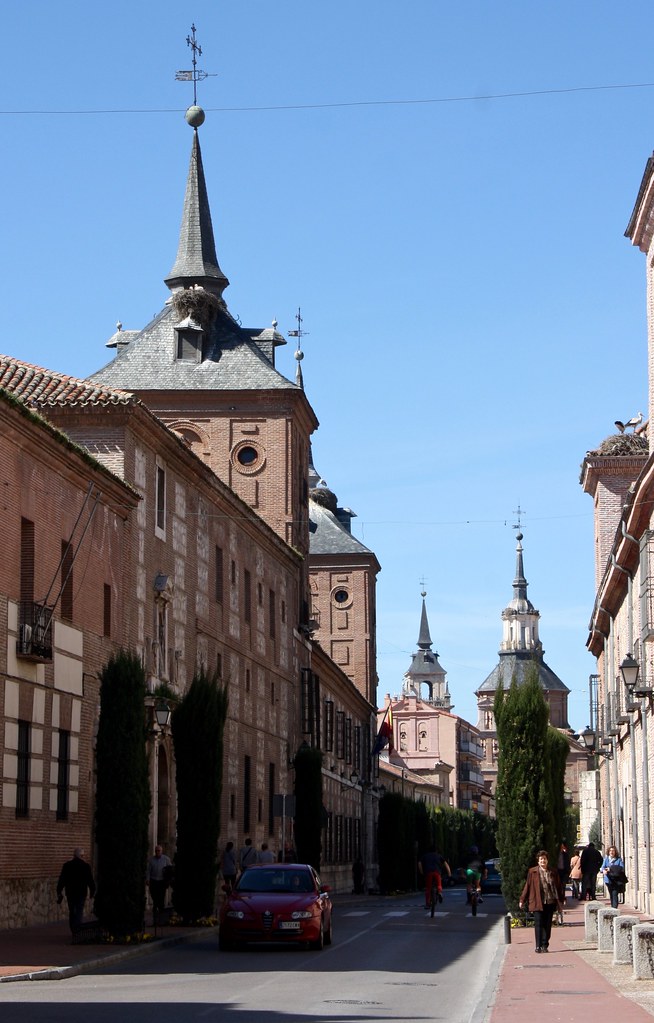 |
| A town of many towers |
This was what I was excited to explore on my guided tour of the College of San Ildefonso that morning. The tour guide led me and a handful of Spaniards around three courtyards, some multi-storied with grand columns and arches, and others that felt more like your typical college quad with grassy lawns and shade trees.
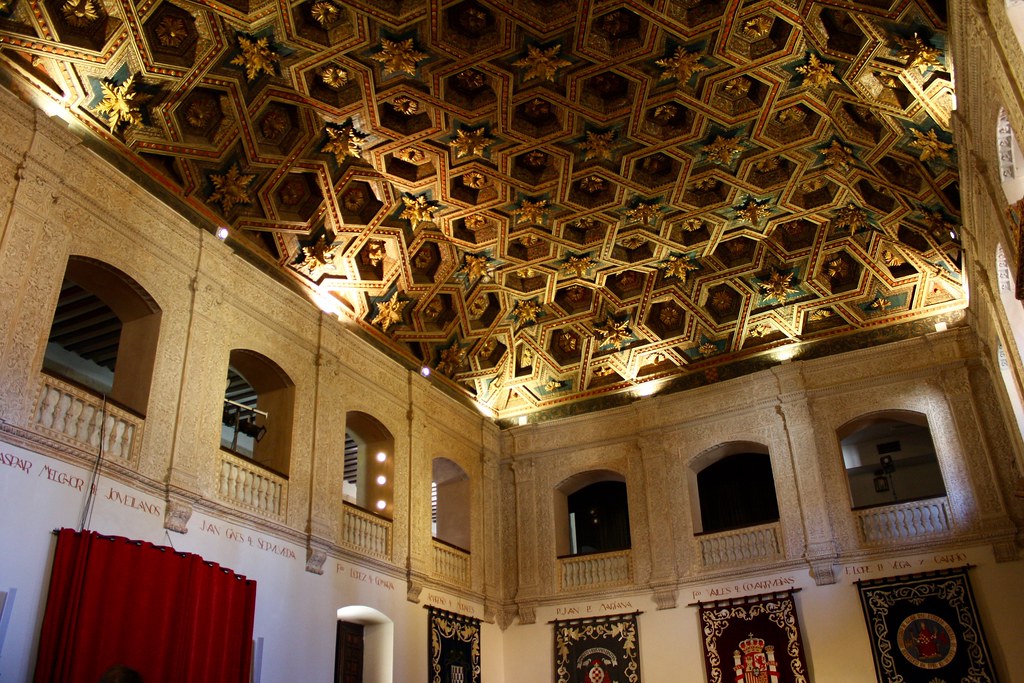 |
| I wasn’t supposed to take this picture…oops |
The highlight of the tour was the old university’s paraninfo or auditorium that was used for official ceremonies and doctoral defenses, complete with a starry Mudéjar-style ceiling. The tour guide shared a fascinating anecdote about the gauntlet that doctoral students had to run in the past: candidates had to present themselves before the faculty of the entire university and be grilled on a wide variety of subjects—regardless of whether they specialized in that field or not. During their defense they were paired up with an “angel” or mentor professor who took their side on tough questioning…as well as a “demon” or adversary who did their best to undercut them at every step. And on top of all this, members of the public were invited to fill the upper-storey galleries where they would get loud and rowdy. Can you imagine the pressure those students must have felt?
With this secondhand anxiety fresh on my mind, I welcomed the change of scenery when the tour moved on to the university chapel, a serene sanctuary decorated in intricate white plaster and topped with a darkly-stained wooden ceiling. As I listened to the tour guide explain the finer points of Plateresque architecture, I mentally added “insane doctoral defense” to Reasons I’m Glad I Wasn’t Born In 1490.
The Cervantes connection
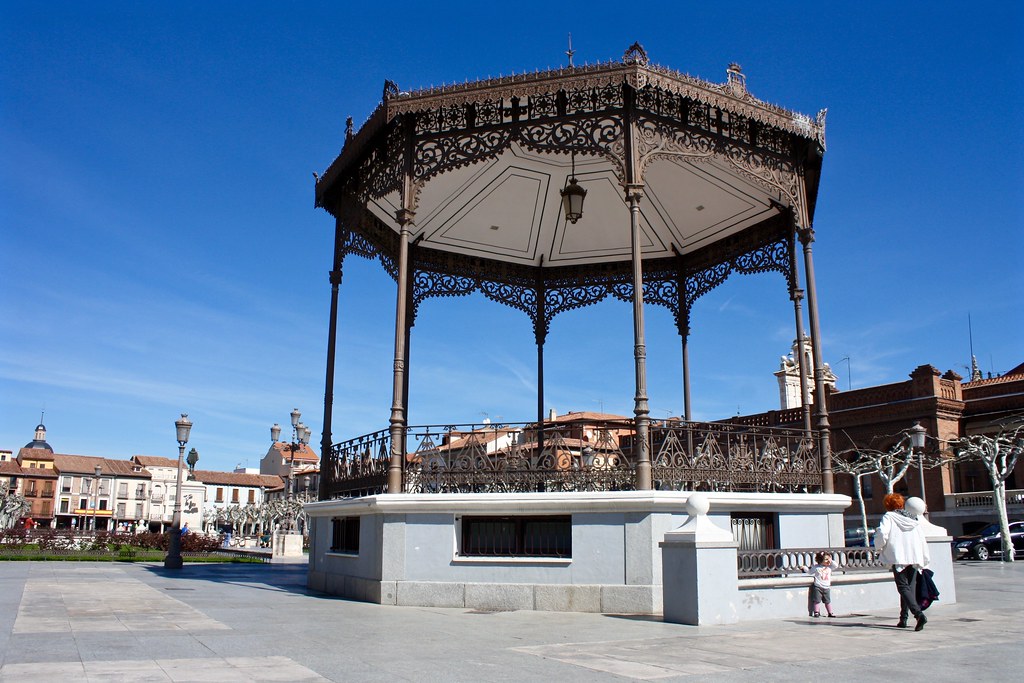 |
| Gazebo in Plaza de Cervantes |
Being the birthplace of Spain’s oldest and most prestigious university put Alcalá on the map—Oxford would still be a historically-significant city today even if its namesake university had moved to London—but being the birthplace of Miguel de Cervantes endears Alcalá in the hearts of many Spaniards, much in the same way that Stratford-on-Avon does to lovers of Shakespeare.
The author of Don Quixote gives his name to the town’s main square: bordered by houses that balance on soportales or arched covered walkways, this expansive public space is festooned with flower beds and crowned with a pretty wrought-iron bandstand. It’s also the epicenter for the town’s annual medieval market, a festival held a week or so after Cervantes’ date of birth.
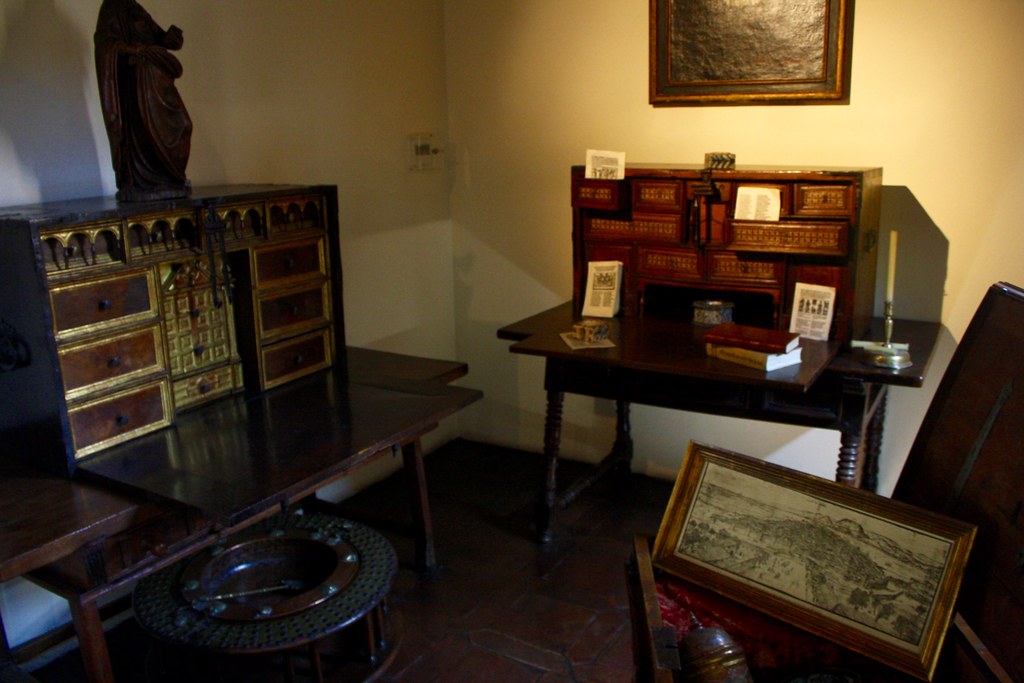 |
| From Cervantes’ birthplace |
It didn’t take me long to walk from Plaza de Cervantes to the Casa Natal de Cervantes, or what is assumed to be the house that the groundbreaking Spanish author is believed to have been born in. Set back from the busy Calle Mayor, the Casa Natal is a small, historic two-story house that attempts to recreate domestic life as it was in the mid-1500s. To me it was a little underwhelming, but I enjoyed the cozy central patio around which the house was built.
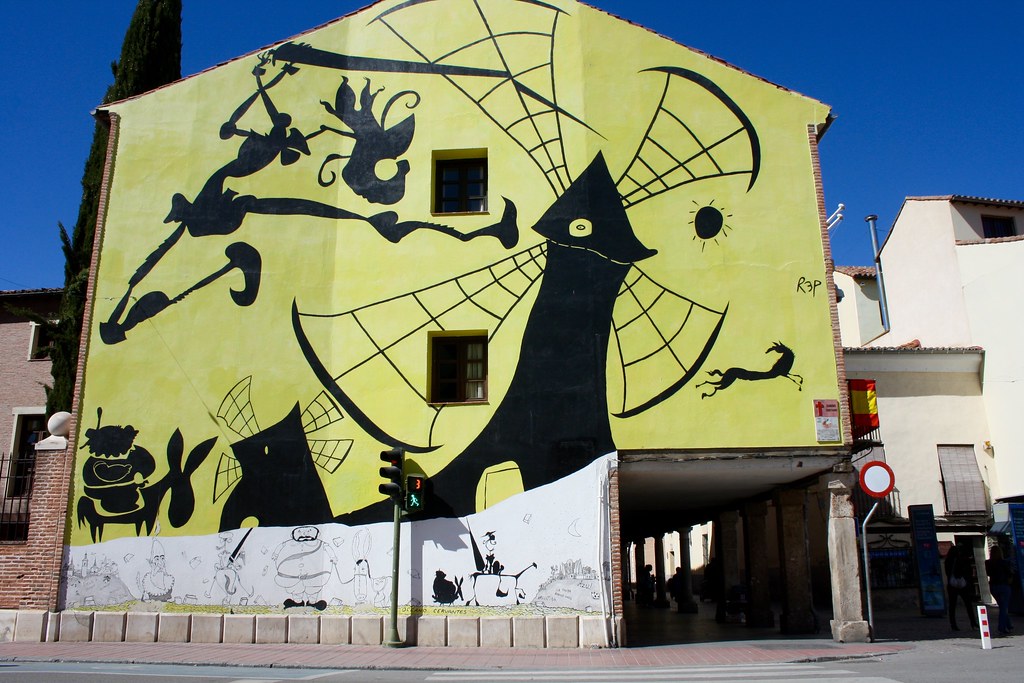 |
| Fun tilting-at-windmills mural |
As you might expect, Alcalá milks the Cervantes connection for all its worth: tourist shops sell little trinkets of Quixote and Sancho Panza, murals depict the famous tilting-at-windmills scene from Don Quixote, and every other bar and restaurant is named La Galatea or El Cervantino.
In spite of this touristic cheesiness, Alcalá is where the Cervantes Prize is awarded every year, a prize that recognizes the achievements of the Spanish-speaking world’s greatest writers. Winners include such giants as Jorge Luis Borges, Octavio Paz, and Camilo José Cela.
Stork-watching opportunities
 |
| Storks |
I was looking forward to pretty university architecture and reliving the
How to get there
 |
| Plaza de las Bernardas |
From Madrid’s Atocha railway station, you can catch the C-7 Cercanías commuter train that ends in central Alcalá de Henares, but you could also ride the C-2 line that continues on to Guadalajara. Once you’re at the station, head south along the Paseo de la Estación until you get to a roundabout, then keep going south to Plaza de Puerta de los Mártires, where you can turn right (southwest) onto the old town’s main commercial drag: Calle de Libreros.
For tips on where to go out for tapas, check out Cassandra Gambill’s blog post for some great recommendations.
 |
| Pink magnolias |
Did you have to read Don Quixote growing up? Share your high school experience below in the comments!

